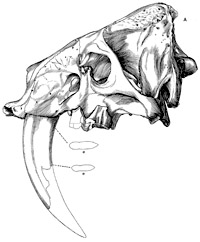Museum, University of Nebraska State
Date of this Version
3-1955
Document Type
Article
Citation
BULLETIN OF the University of Nebraska State Museum VOL. 4, No.1 PP. 1-16, FIGs. 1-8 MARCH 1955
Abstract
Prominent paleosol ("buried" or "fossil" soil) complexes occur at the top of the middle Orella, upper Orella, lower Whitney, and upper Whitney in the Brule formation of Nebraska; and at the top of the "Lower Oreodon," "Middle Oreodon," "Upper Oreodon," and "Leptauchenia" beds in the Brule deposits of South Dakota. These paleosols have regional distribution and appear to be of value in stratigraphic correlations. Major faunal breaks seem to coincide with important buried soil zones, thus indicating that certain paleosols actually represent unconformities. Some of the soils were developed on old land surfaces where deposition was practically at a standstill for long periods of time. Important valley-fills were associated with the soils which formed on the valley slopes and upland surfaces. Paleosols also are present in the Chadron formation of Nebraska, South Dakota, and Wyoming. A very prominent paleosol complex (= "Interior formation") , probably of Eocene age, is present at the top of the Pierre shale (below the Chadron deposits) in Sioux County, Nebraska, and adjacent areas. Profile measurements and field study have demonstrated the complex nature of some of these ancient soil horizons.
Included in
Entomology Commons, Geology Commons, Geomorphology Commons, Other Ecology and Evolutionary Biology Commons, Paleobiology Commons, Paleontology Commons, Sedimentology Commons

